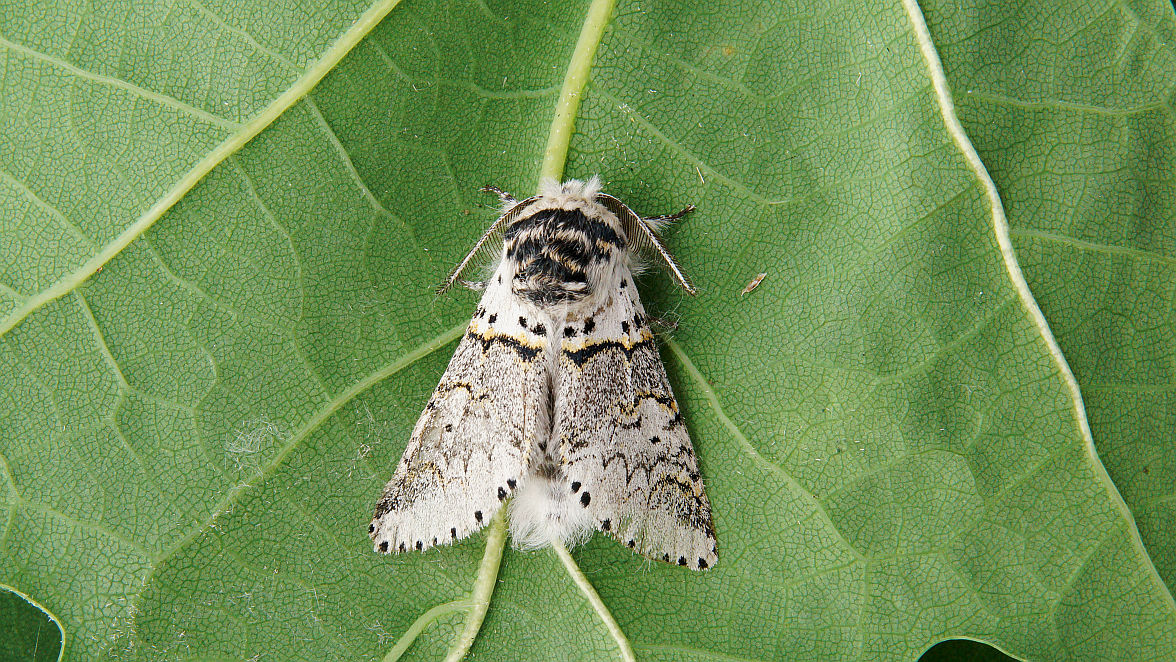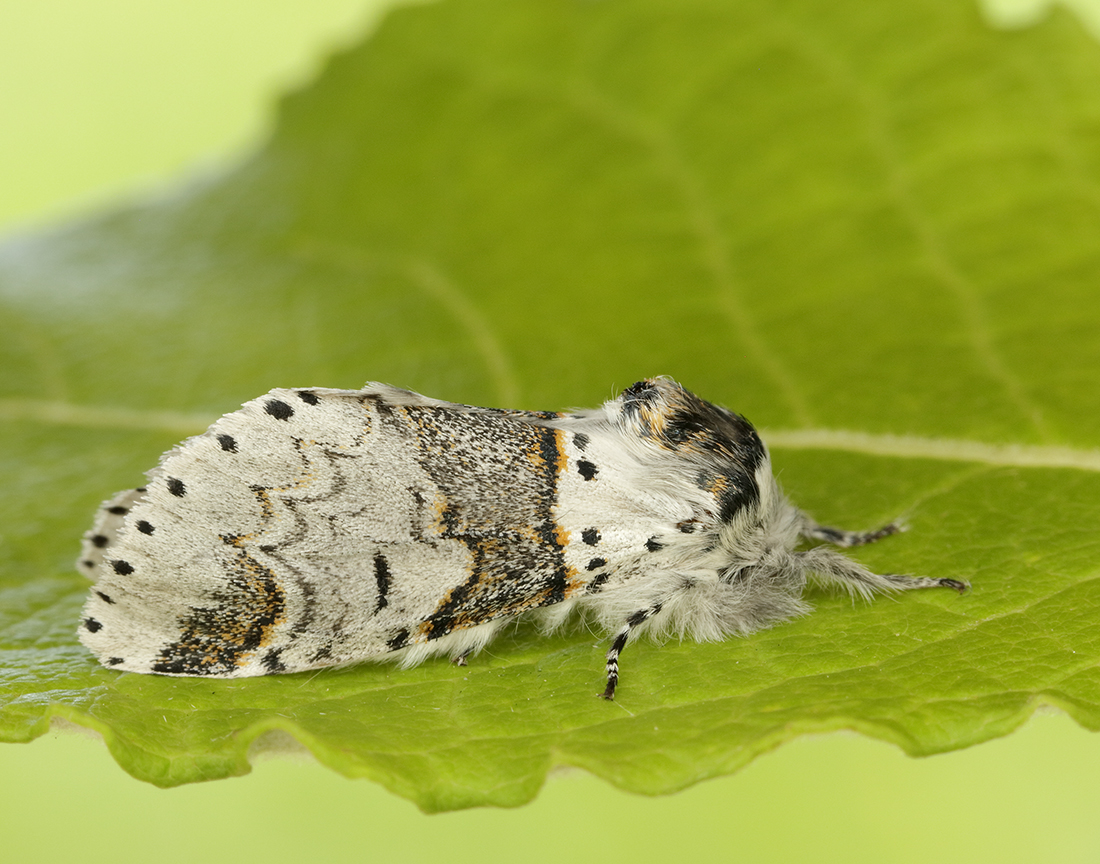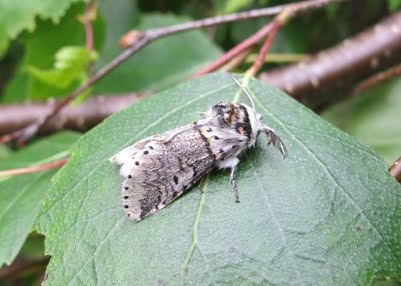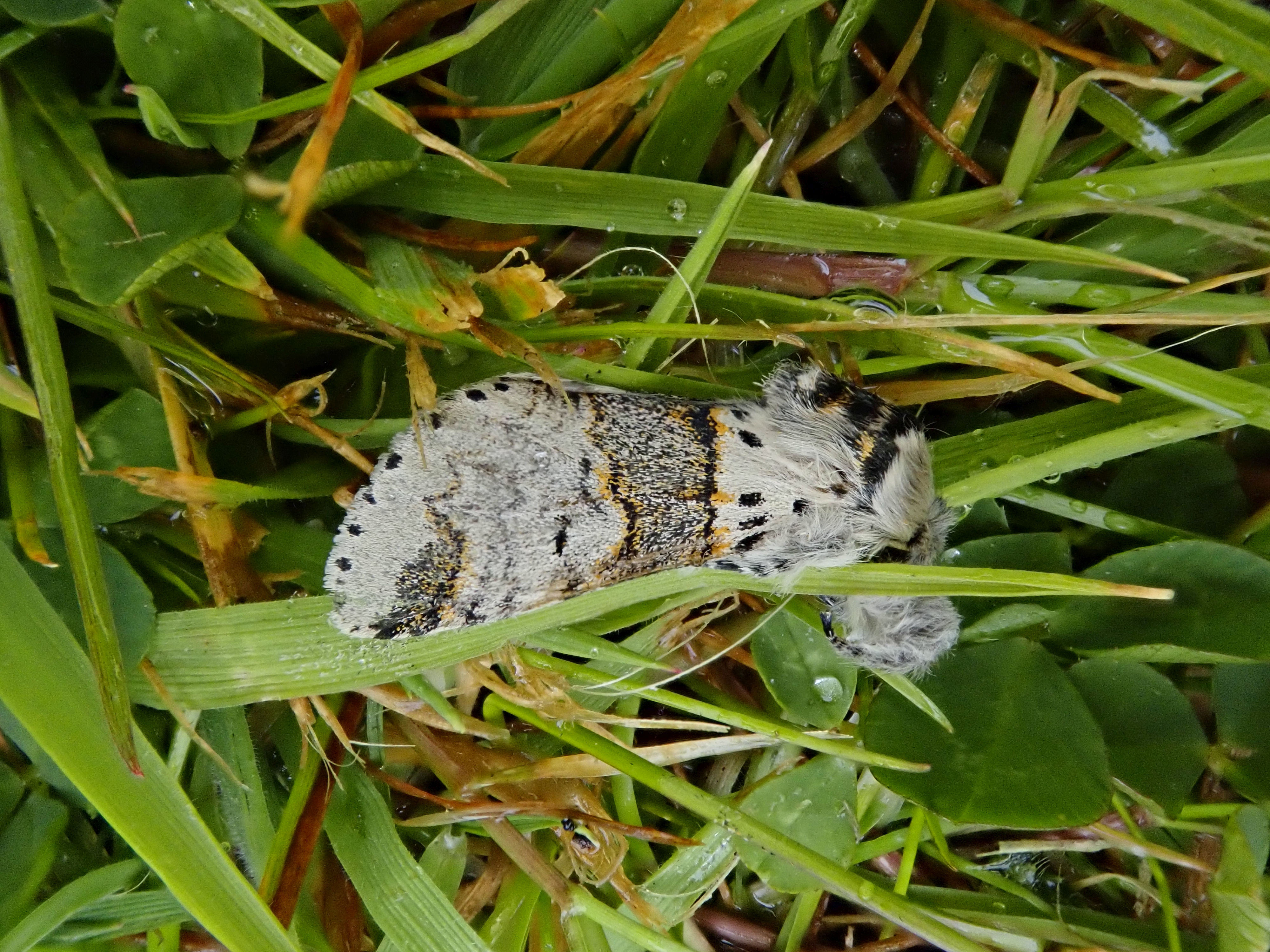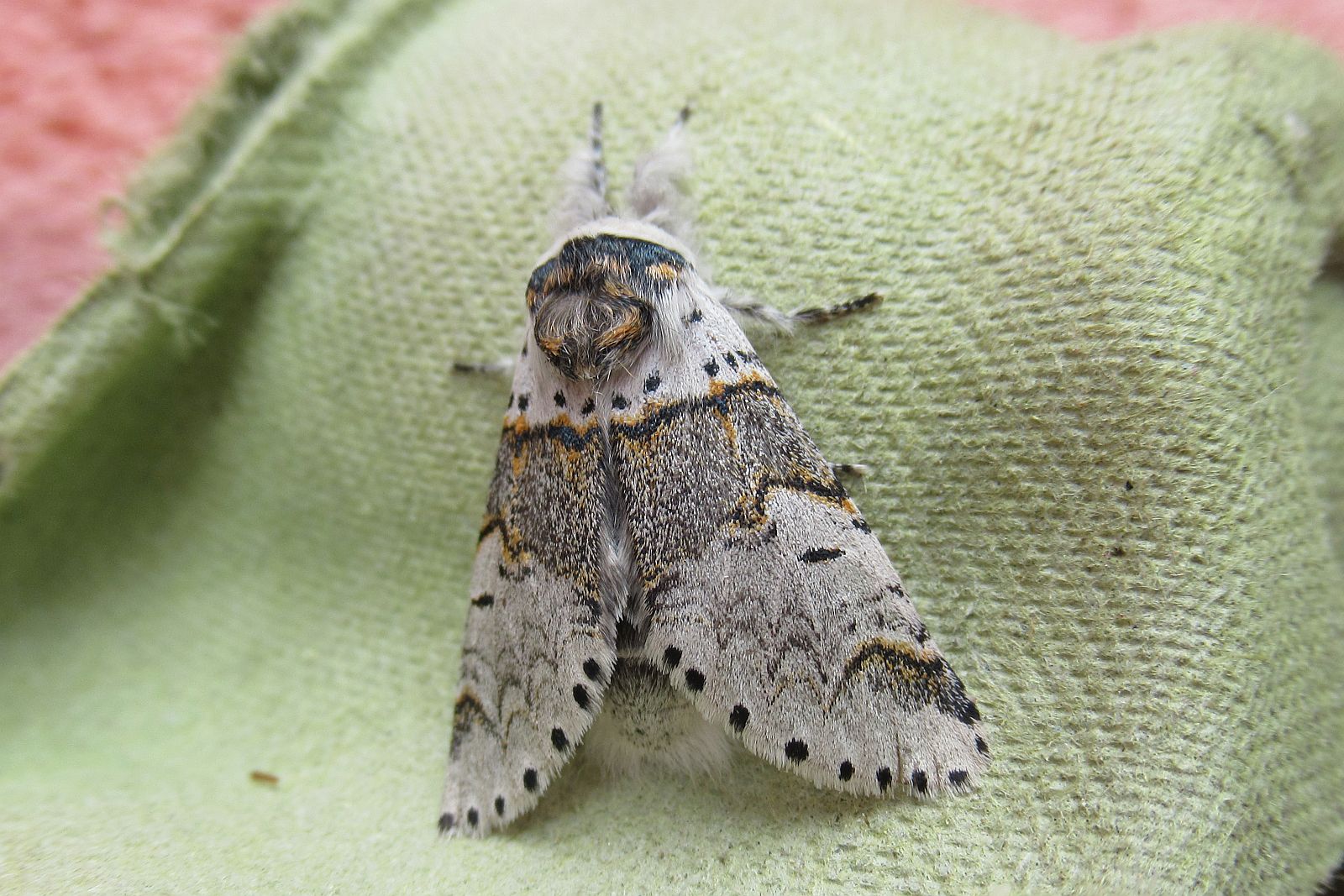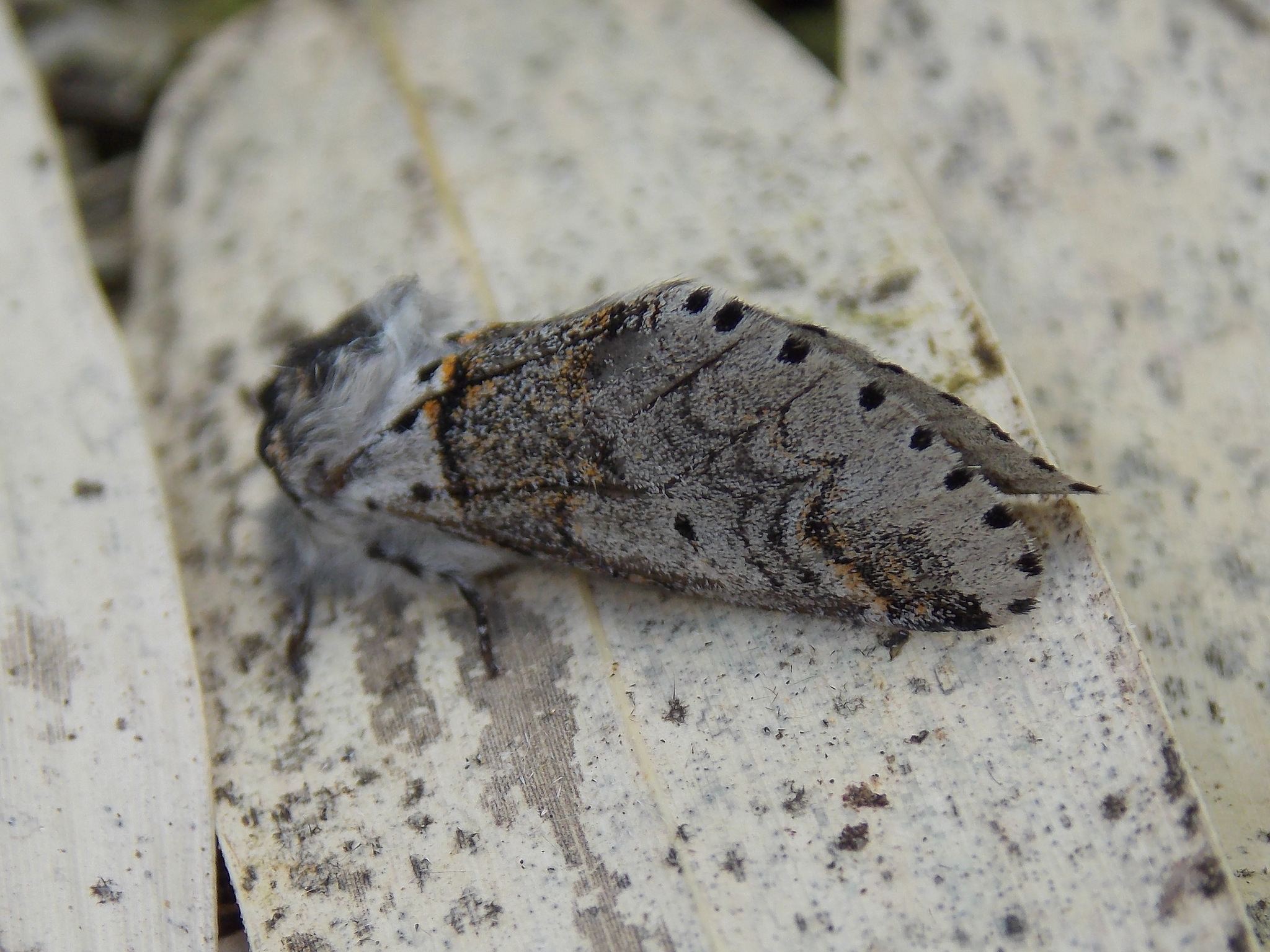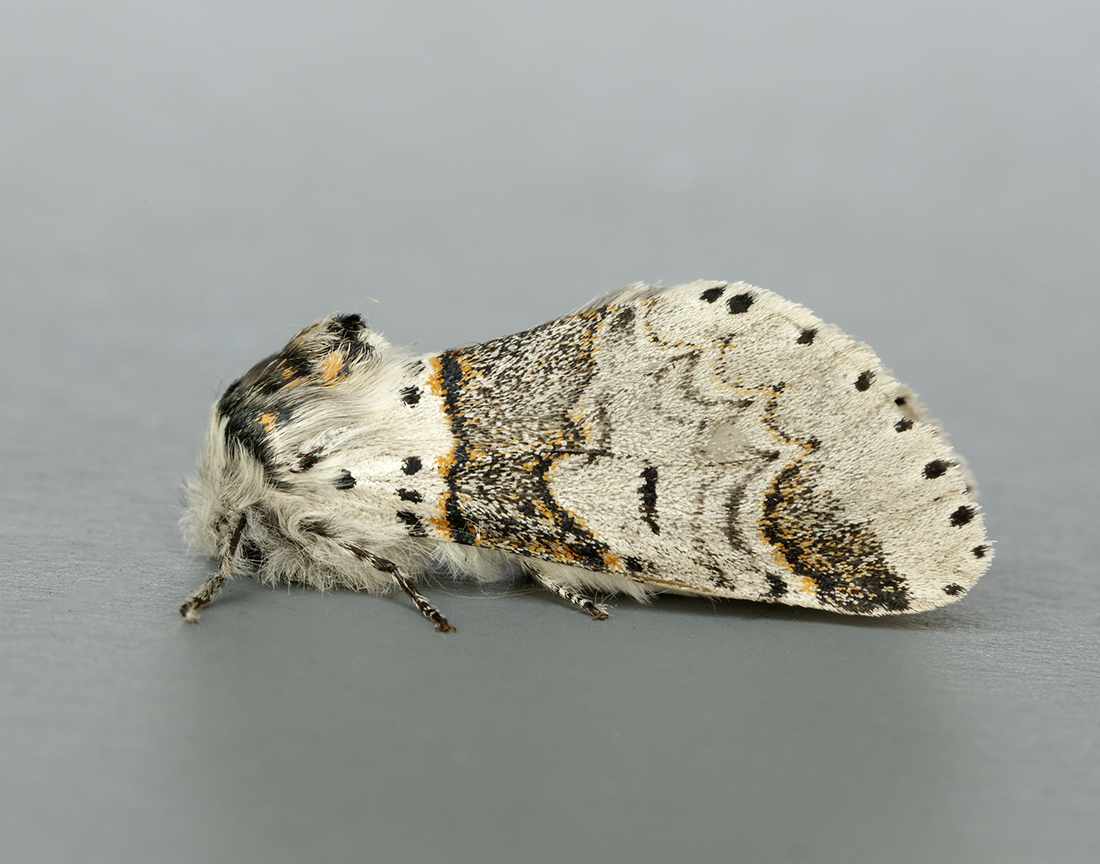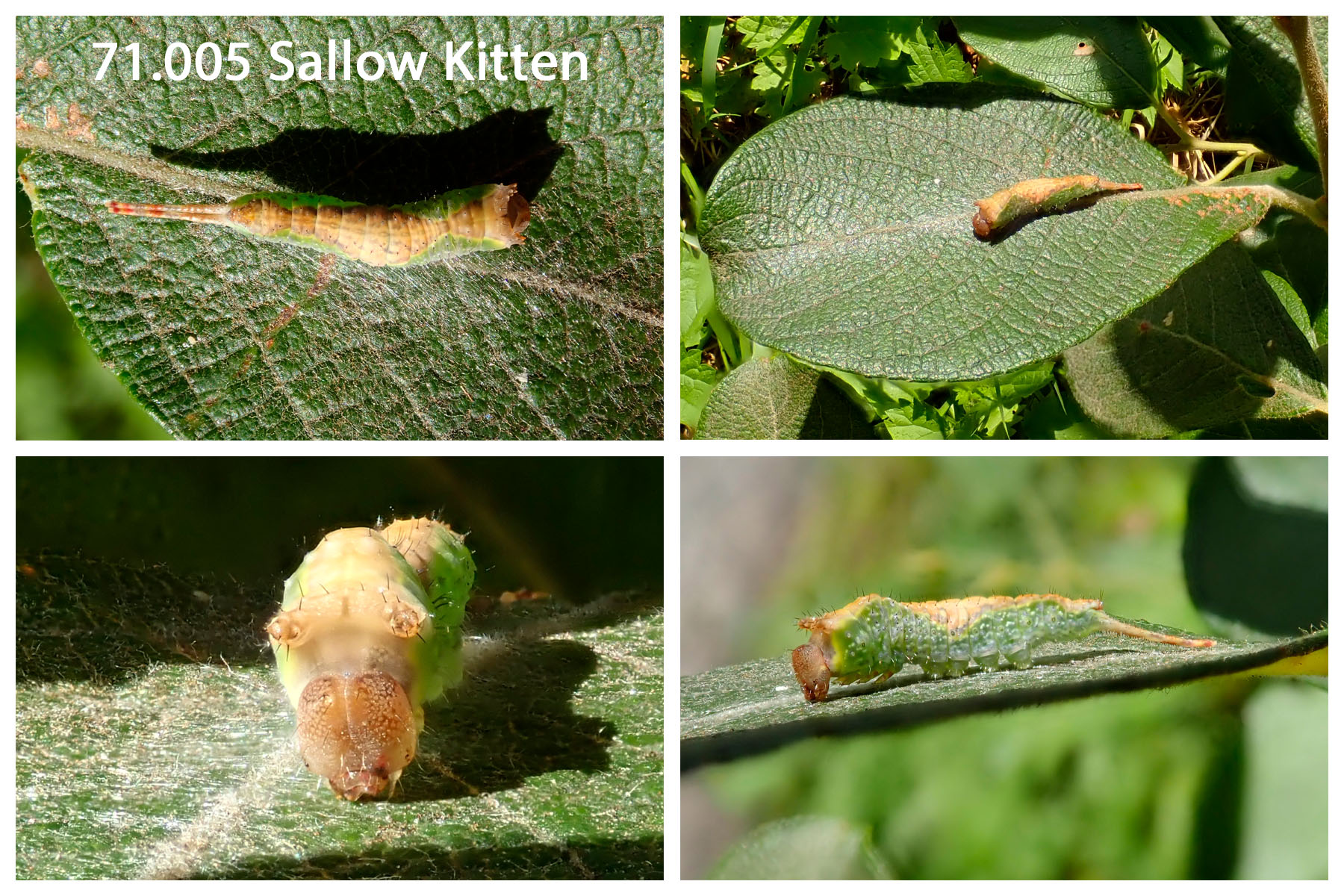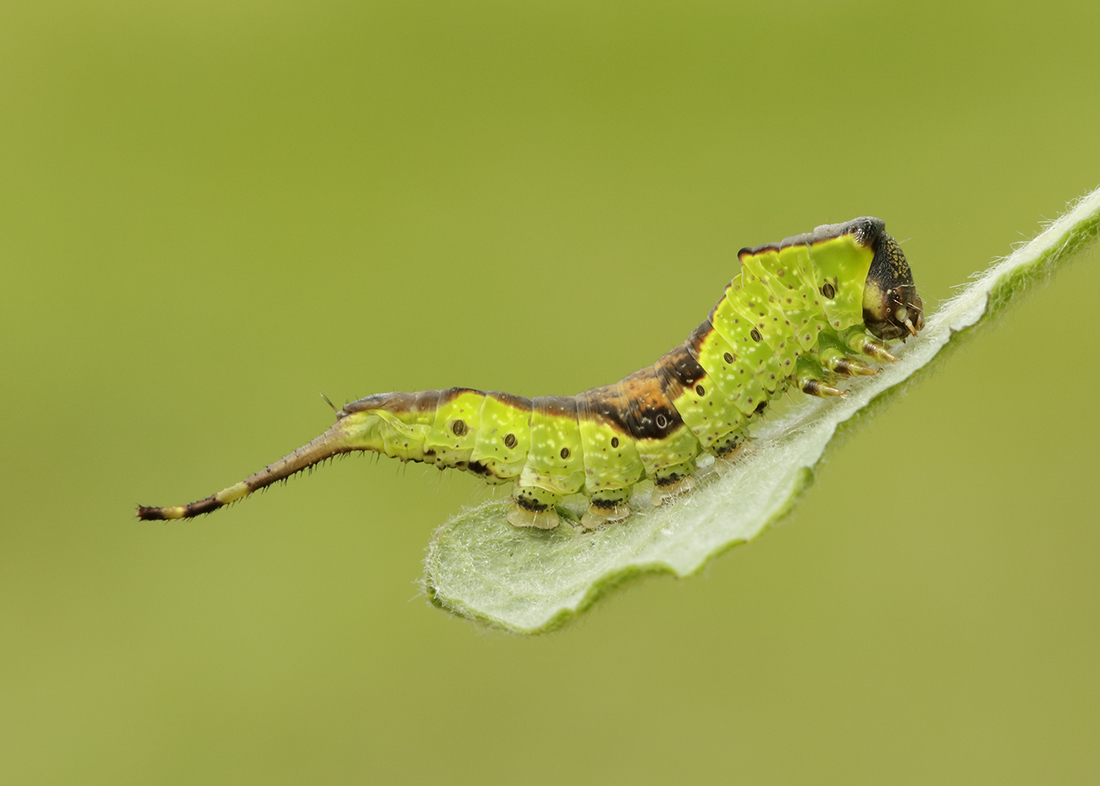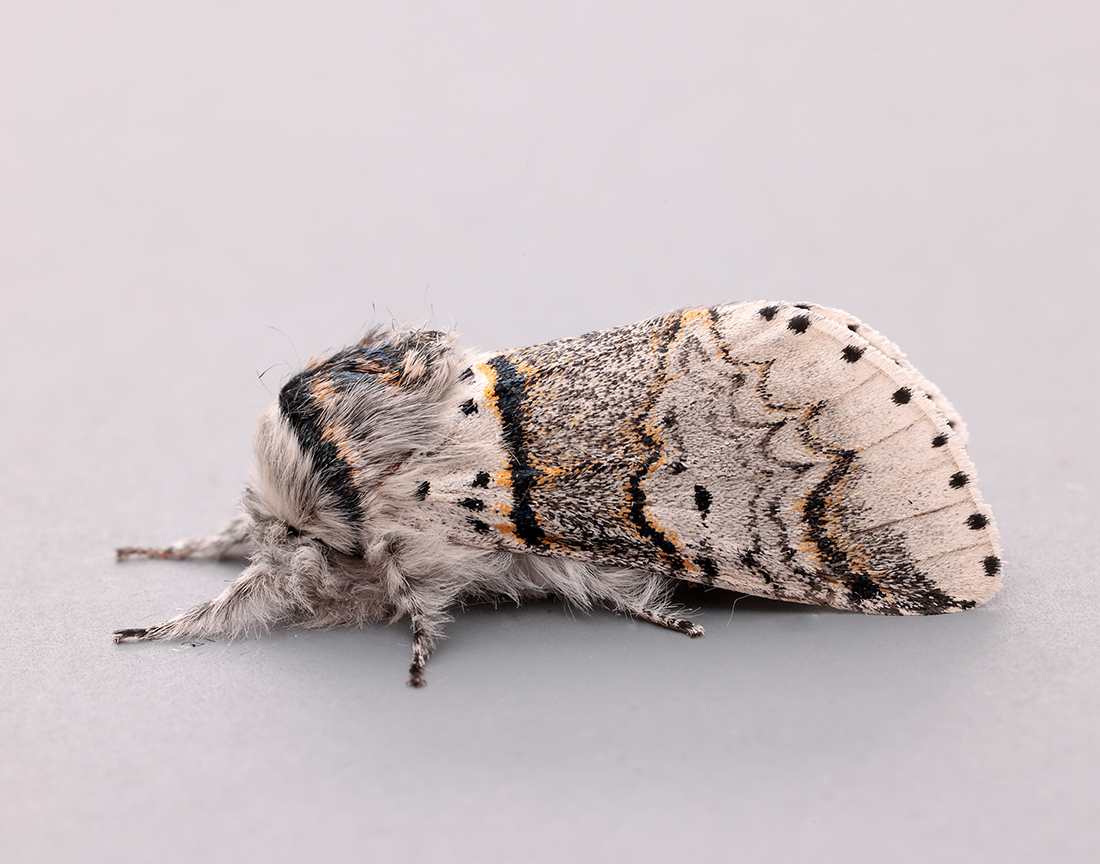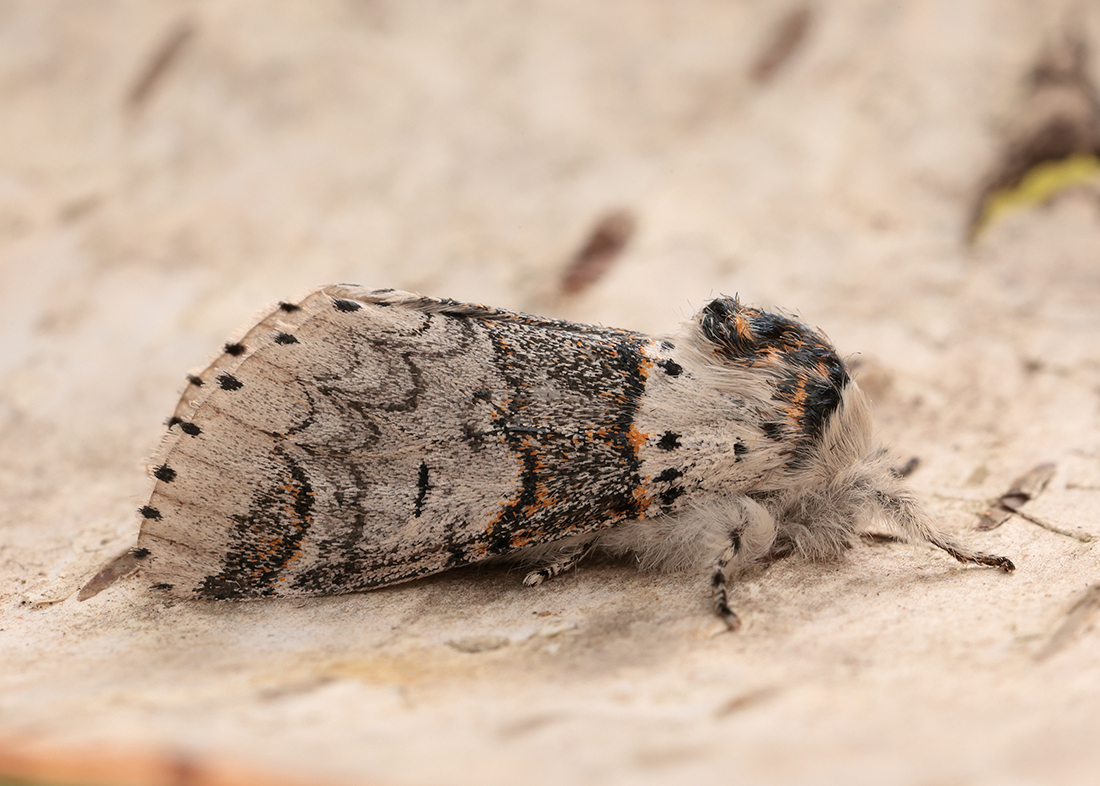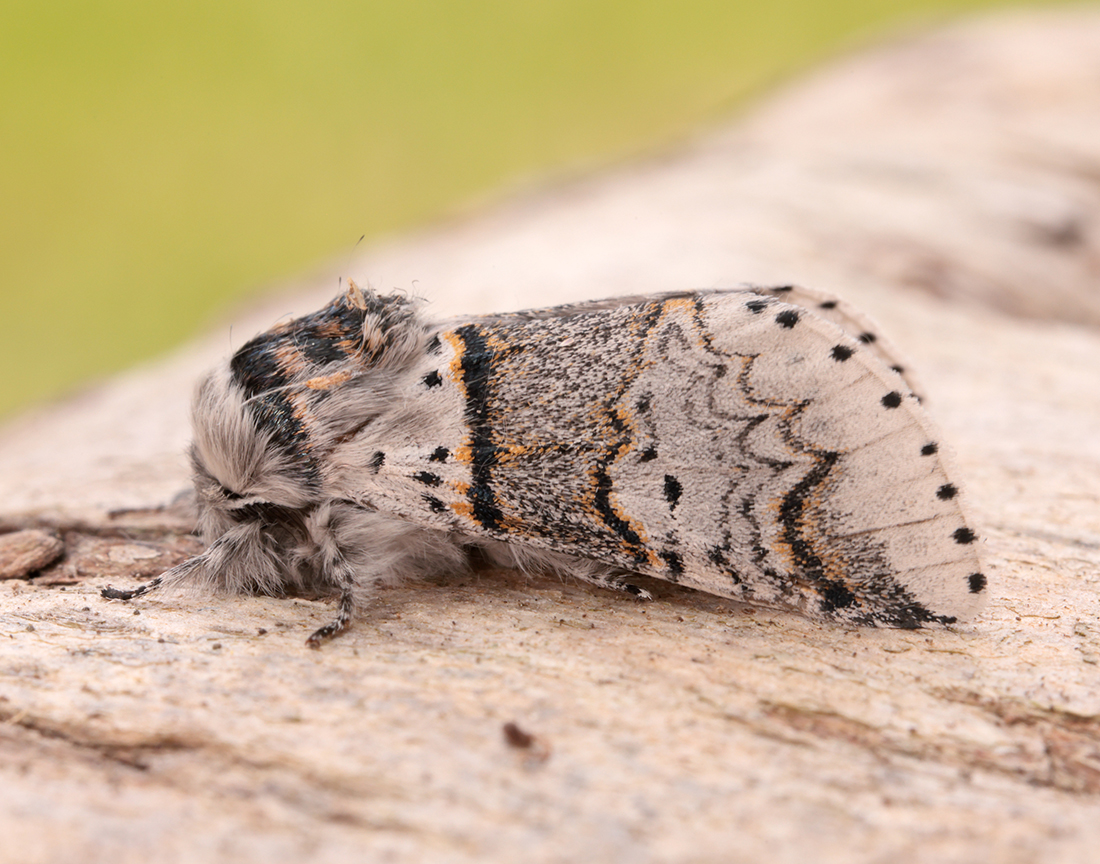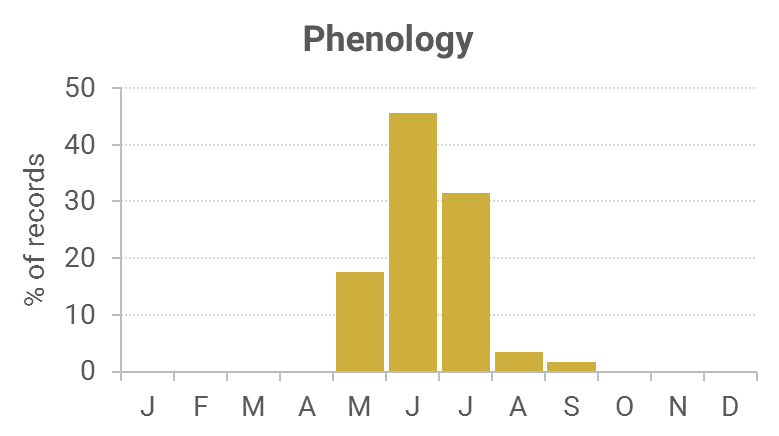Identification
Central crossband is grey with a straight leading edge and irregular outer edge finely outlined in black. Similar to Poplar Kitten (not recorded in D&G but present in northern England).
Recording Method
Comes to light.
Life cycle
One generation. Overwinters as a pupa. Larvae are present July to September, with pupation in a hard cocoon.
Larval foodplants
Mainly willows, but also Aspen and poplars.
Habitat
Open woodland, scrub, hedgerows, moorland and heathland.
History
Lennon (1860) had bred two on, presumably having collected the larvae from around Dumfries where he walked. By 1863 Lennon had found it uncommon but had records for Tinwald Downs and Comlongan (VC72). Douglas Robinson (1870-71) had found two larvae in September, one on Aspen and one on Alder, on Almorness (VC73). Buchanan White of Perth (1895) listed it as occurring in Colvend and Southwick parishes (VC73). R. S. Gordon (1913) stated that his brother J. G. Gordon captured one at his bedroom window at about midnight on 26th June 1898. The larvae were found found to be not uncommon on sallows near the Malzie Burn and Dounan Moor, Corsemalzie and Drumscallan Moss, Monreith.
Sir Arthur Duncan found a larva on sallow at Tynron on 10th August 1950 which spun up at the end of the month. The following year he trapped it at MV light at Tynron. RIS data gave us a record for 1976 at Penninghame (VC74 and one for Dabton (VC72) in 1980. The regular trapping on the Hensol Estate provided records in May 1982, and June 1984.
Ten years went by before another one was caught, Kirkton (VC72) in 1994, and again in 1997 and 1998. The first decade of the 21st century has yielded 15 records, but none in 2008 and 2009, with the majority from VC73, one VC74, and two from VC72, one of them far to the east at Carrifran in the Moffat Hills.




